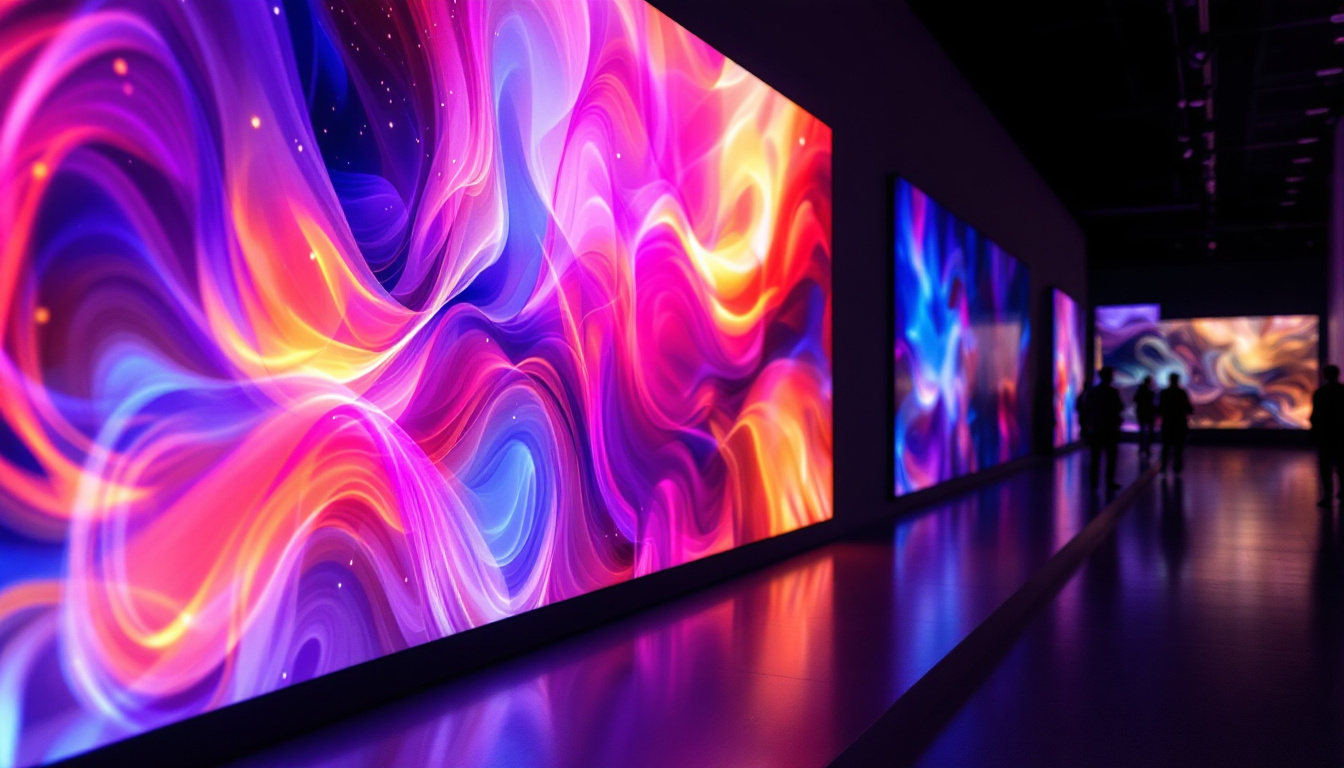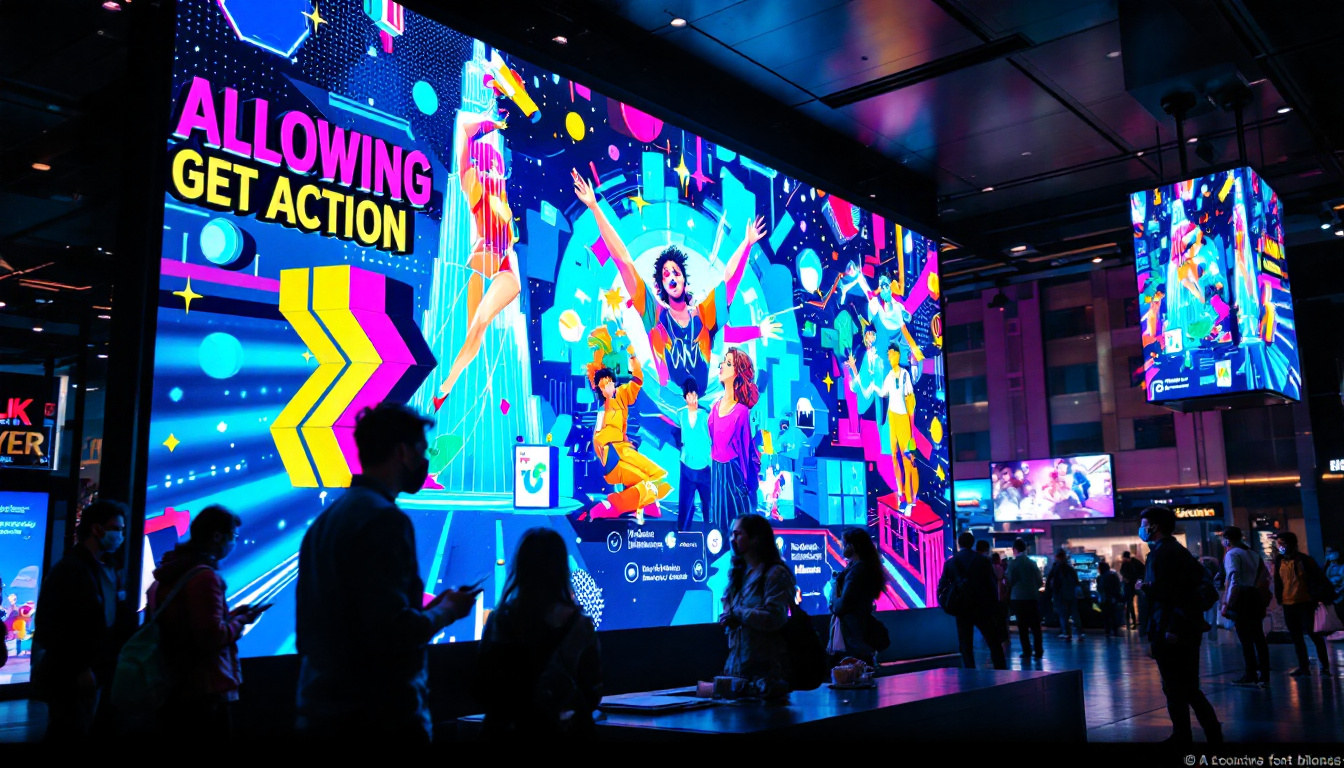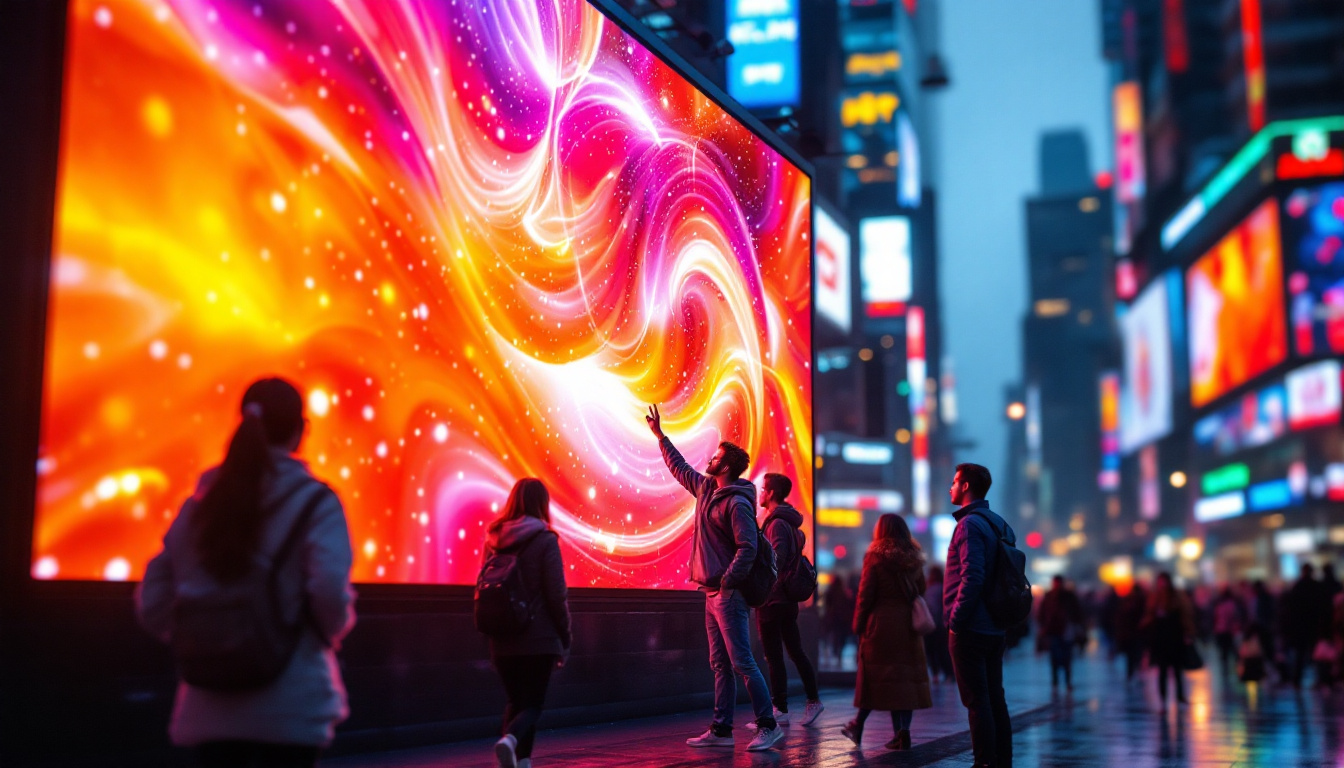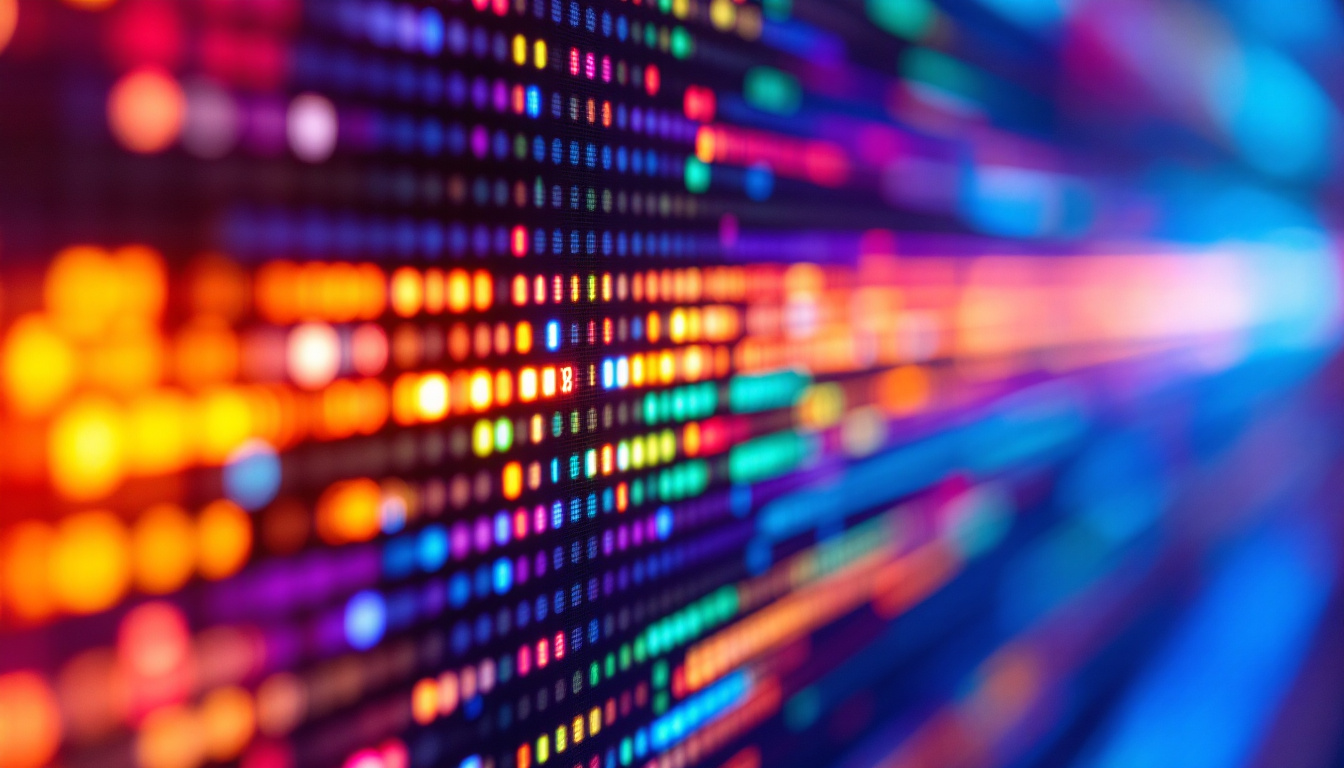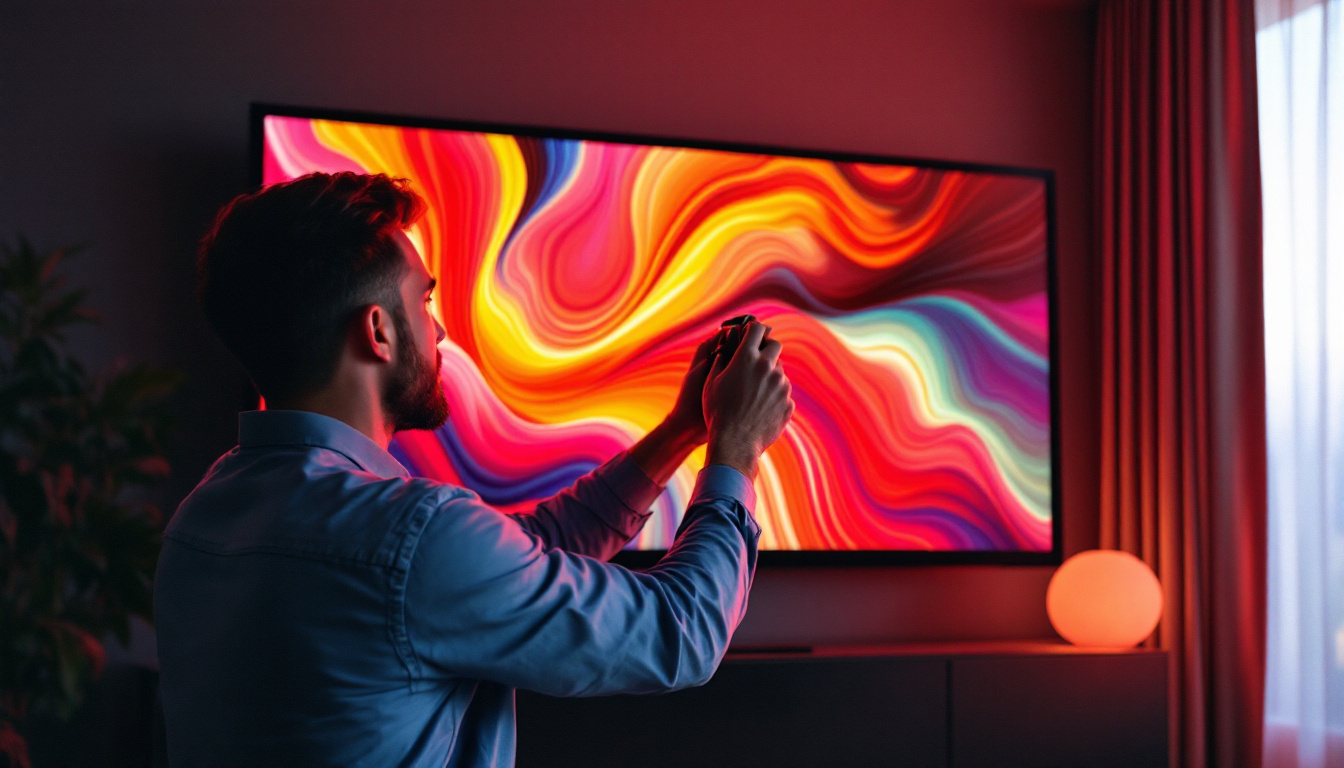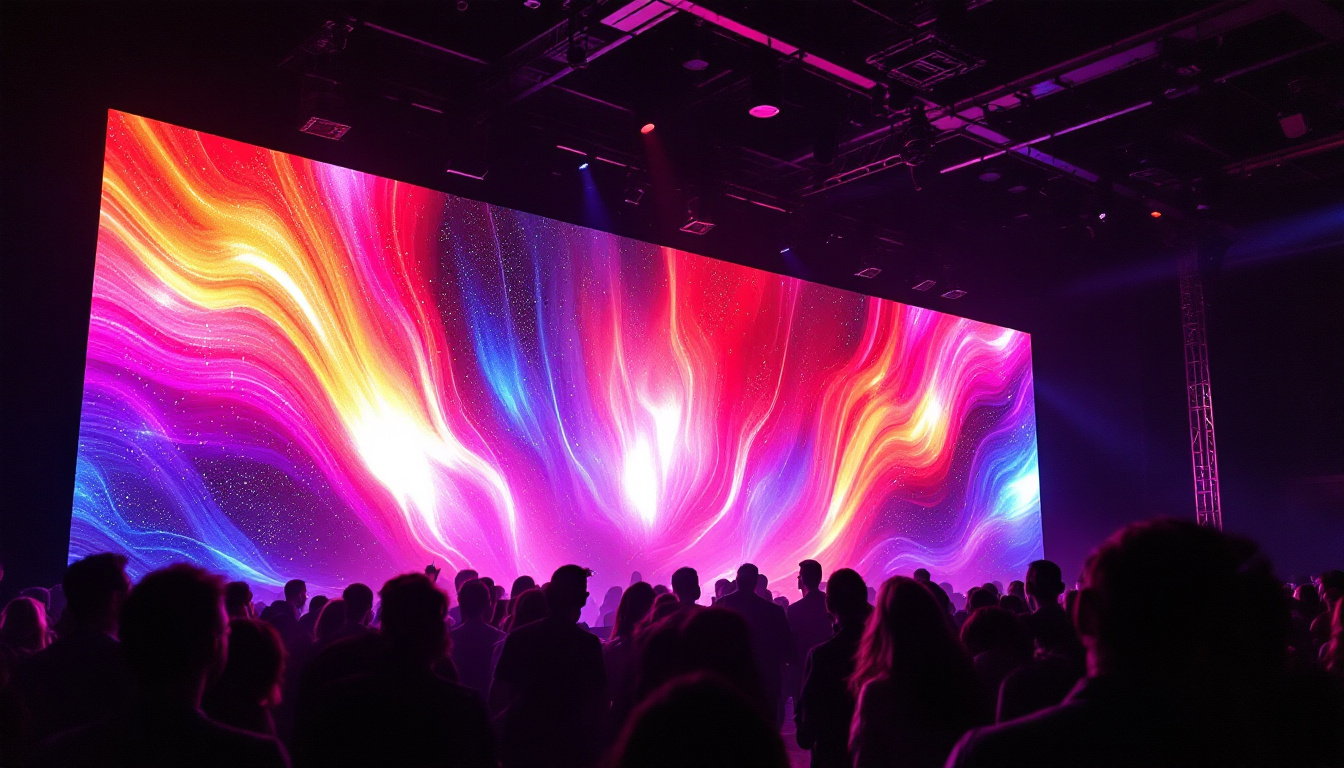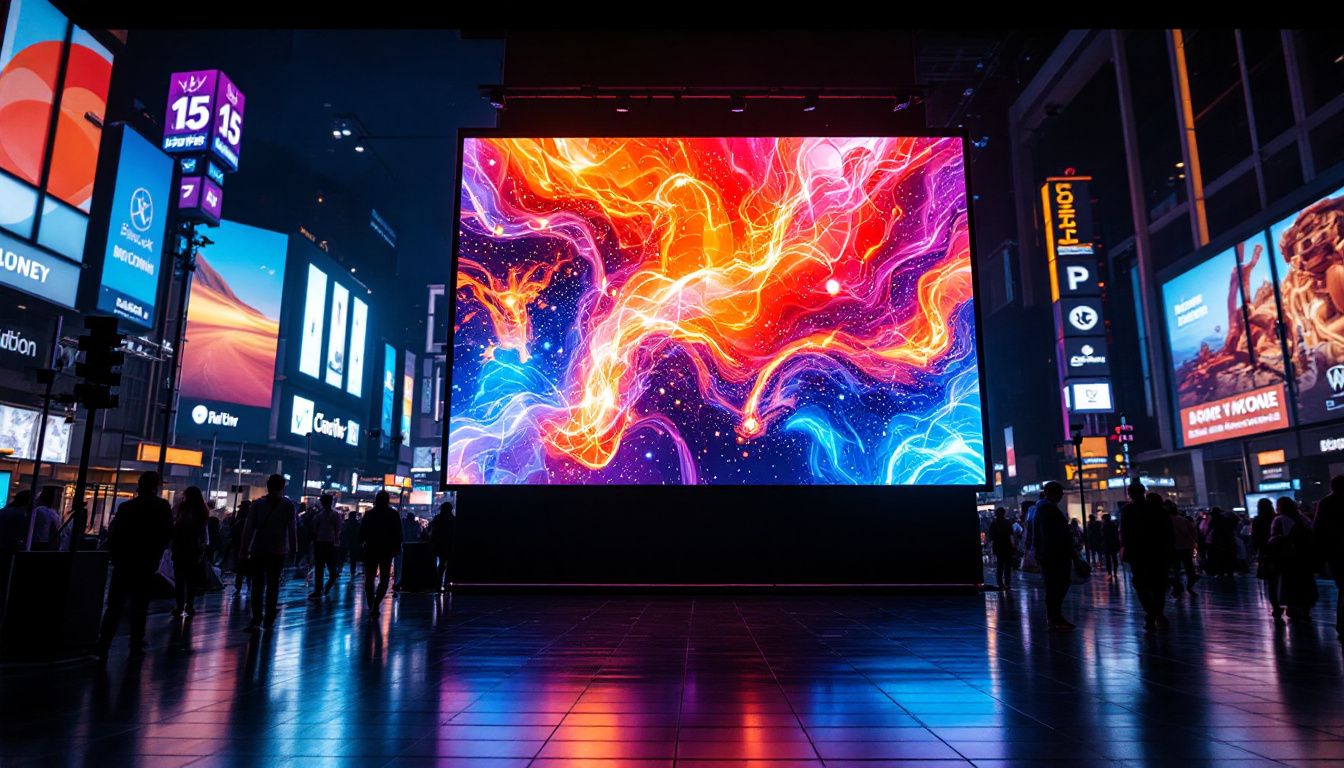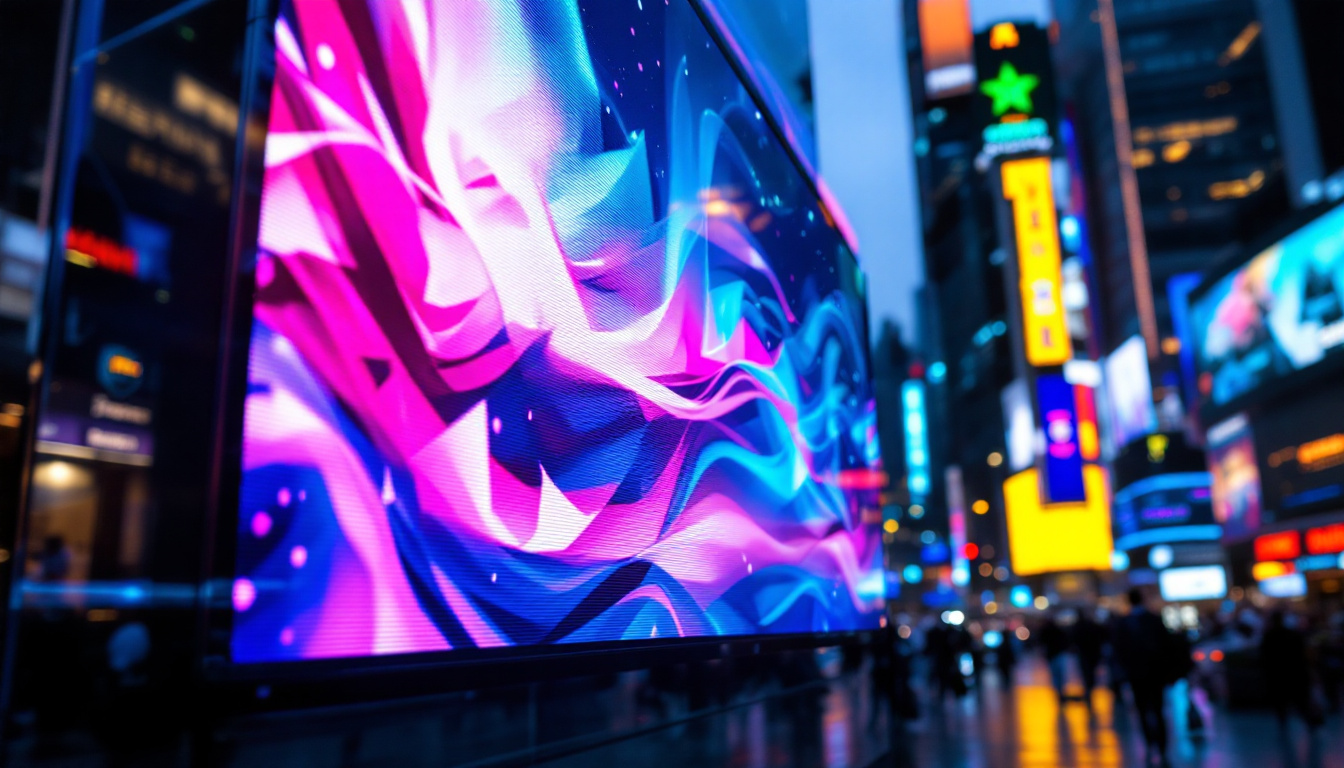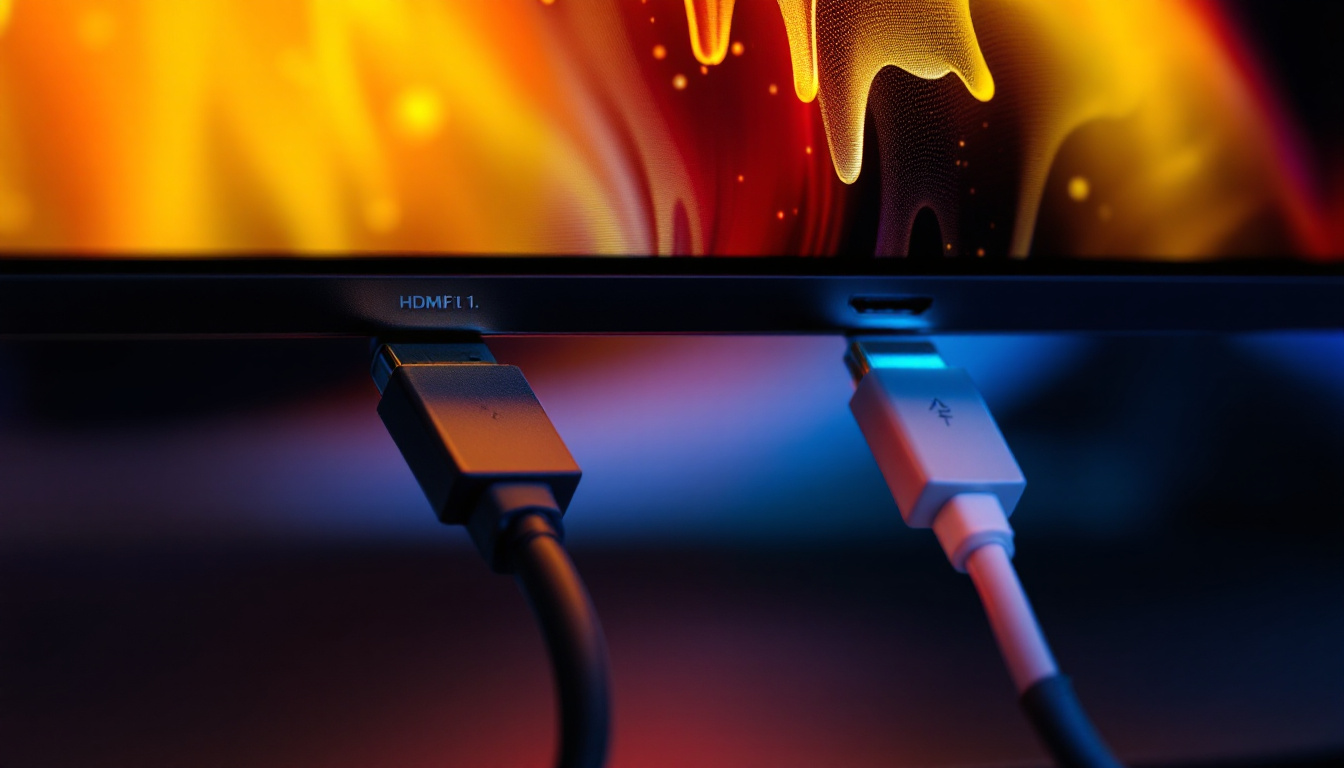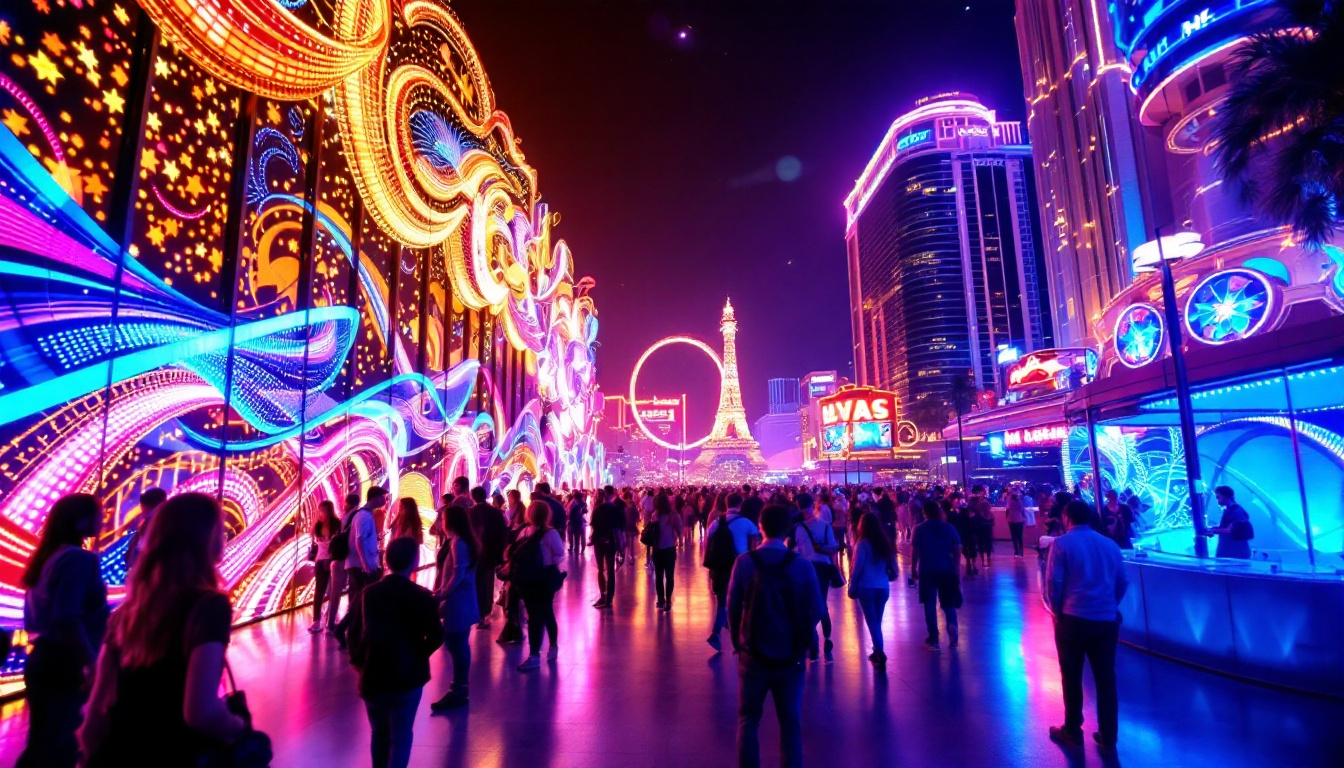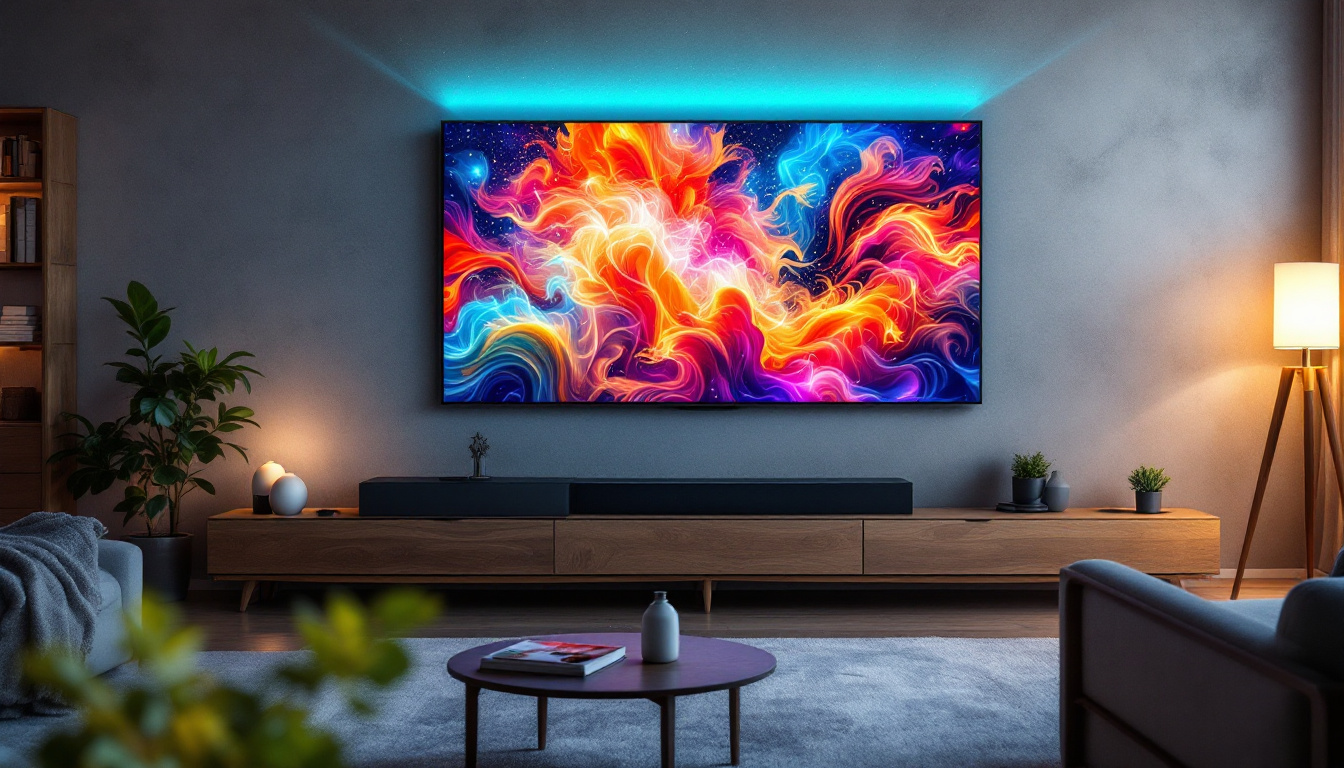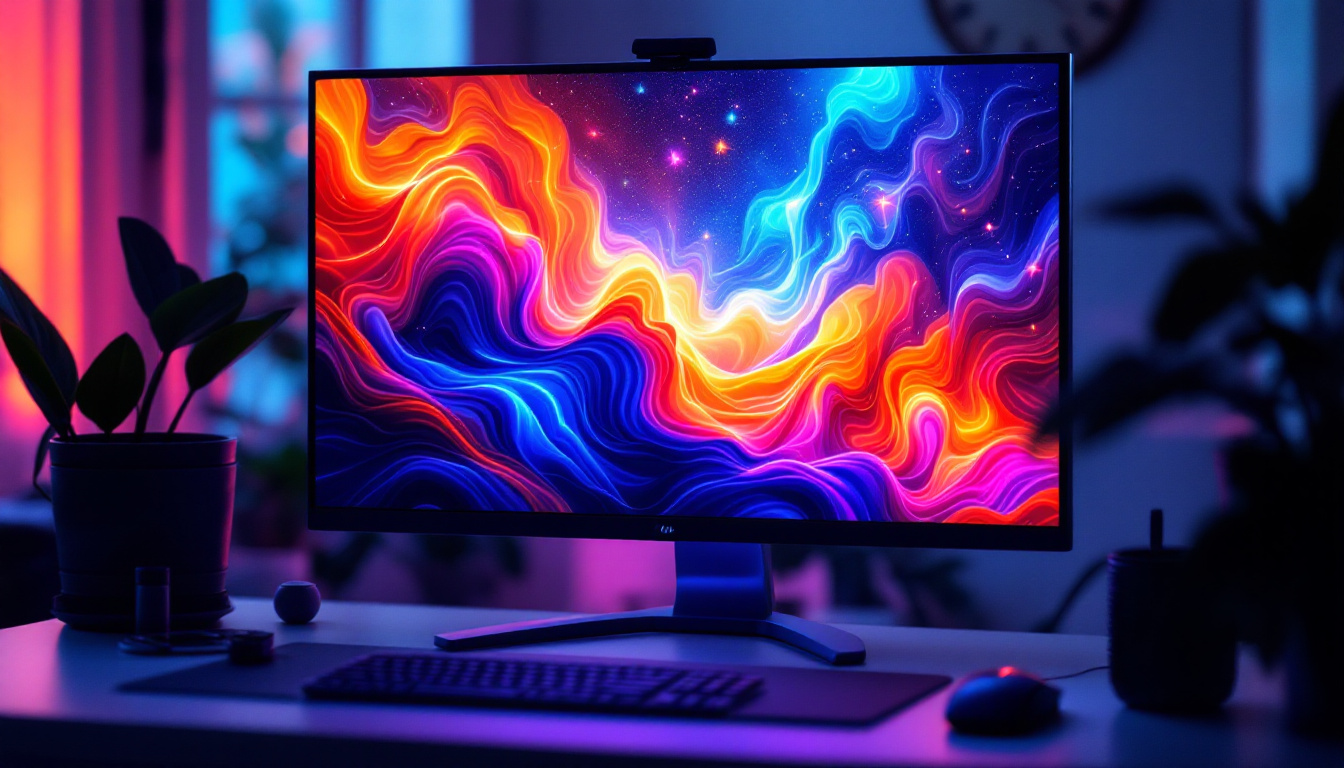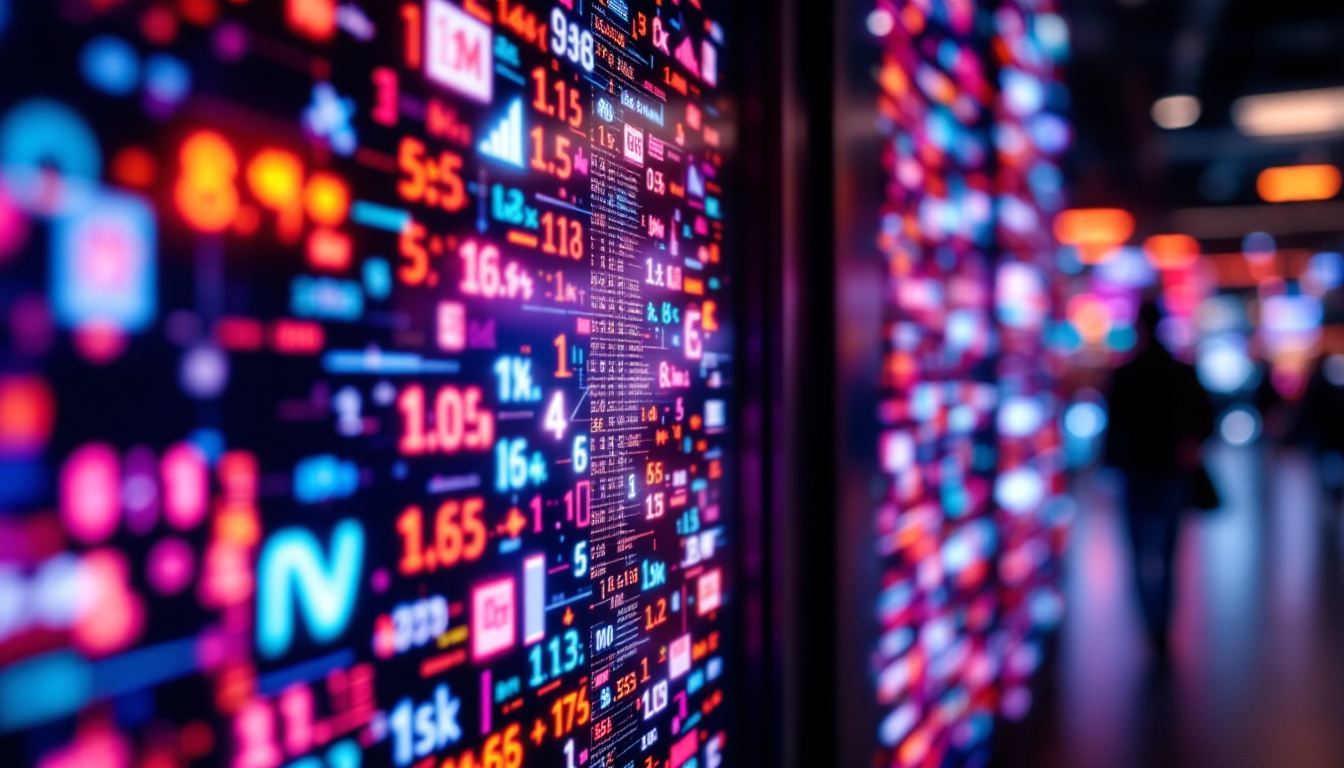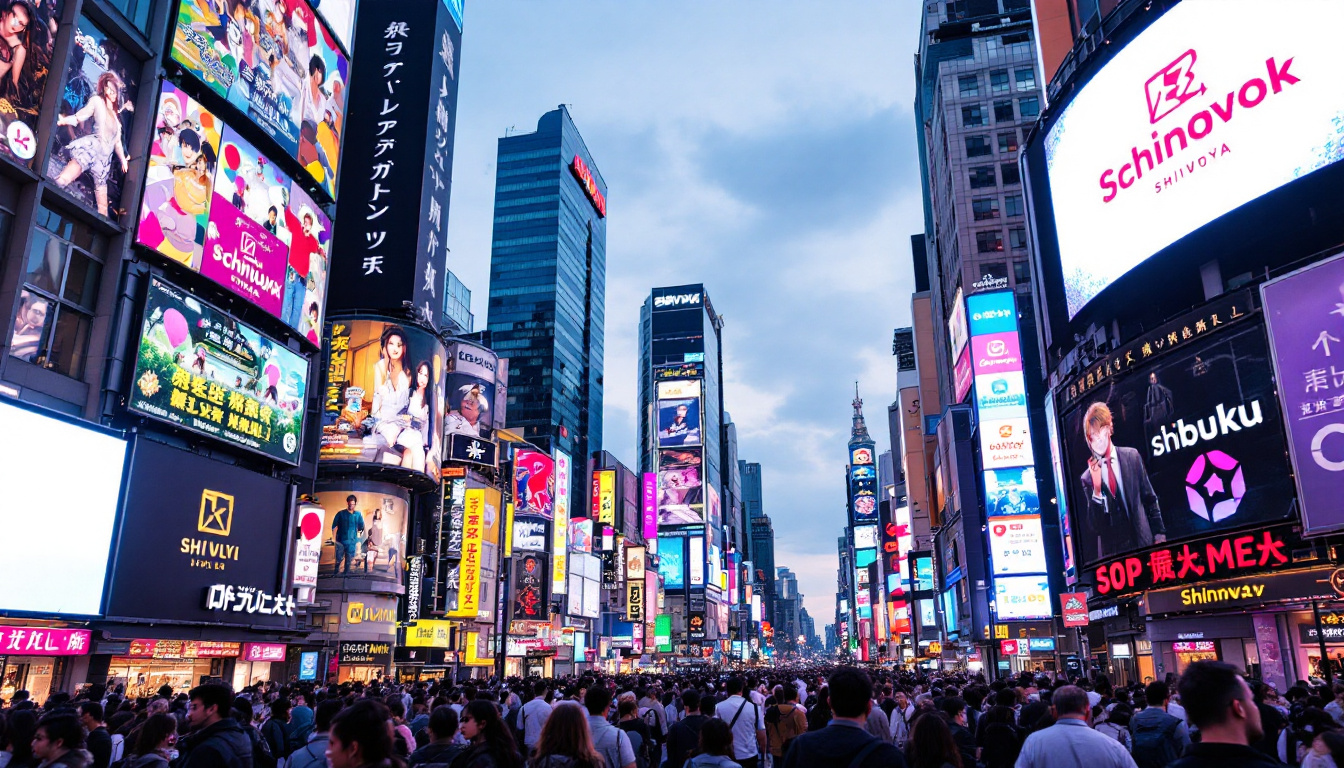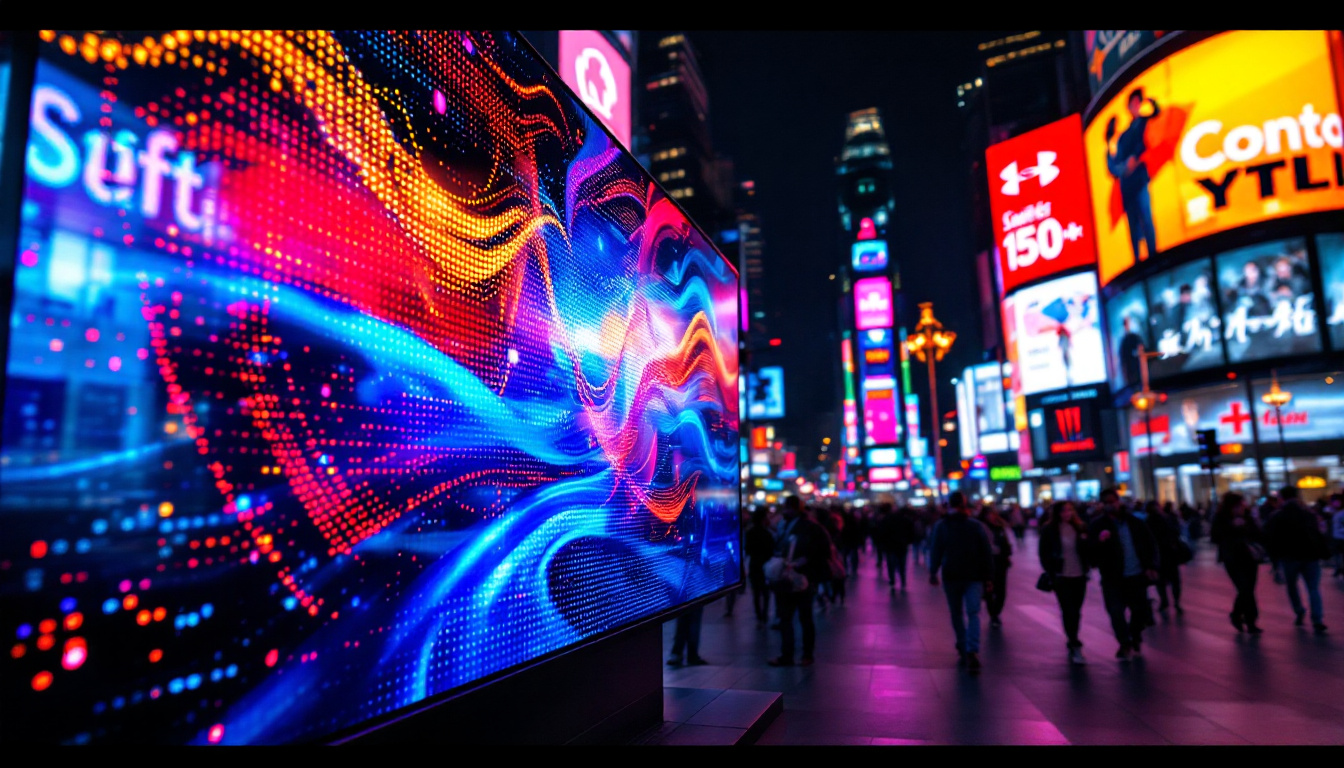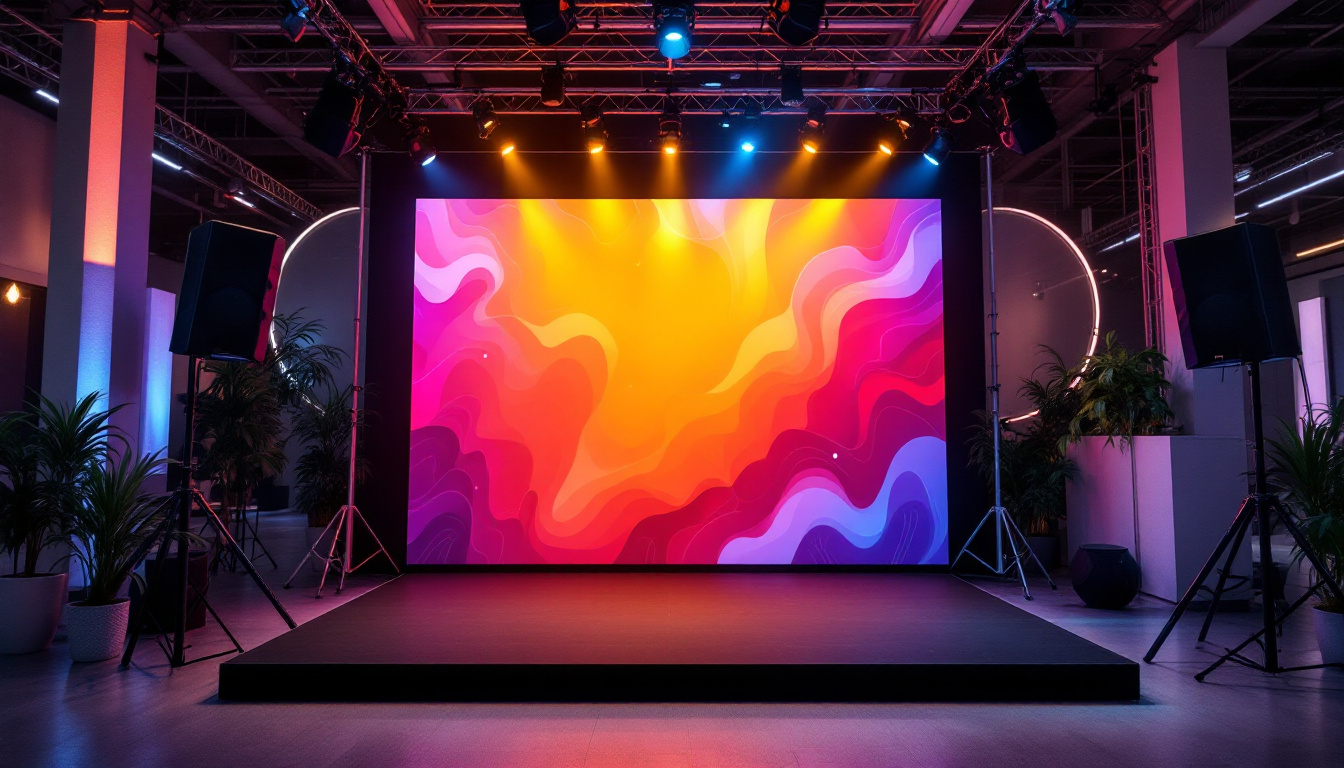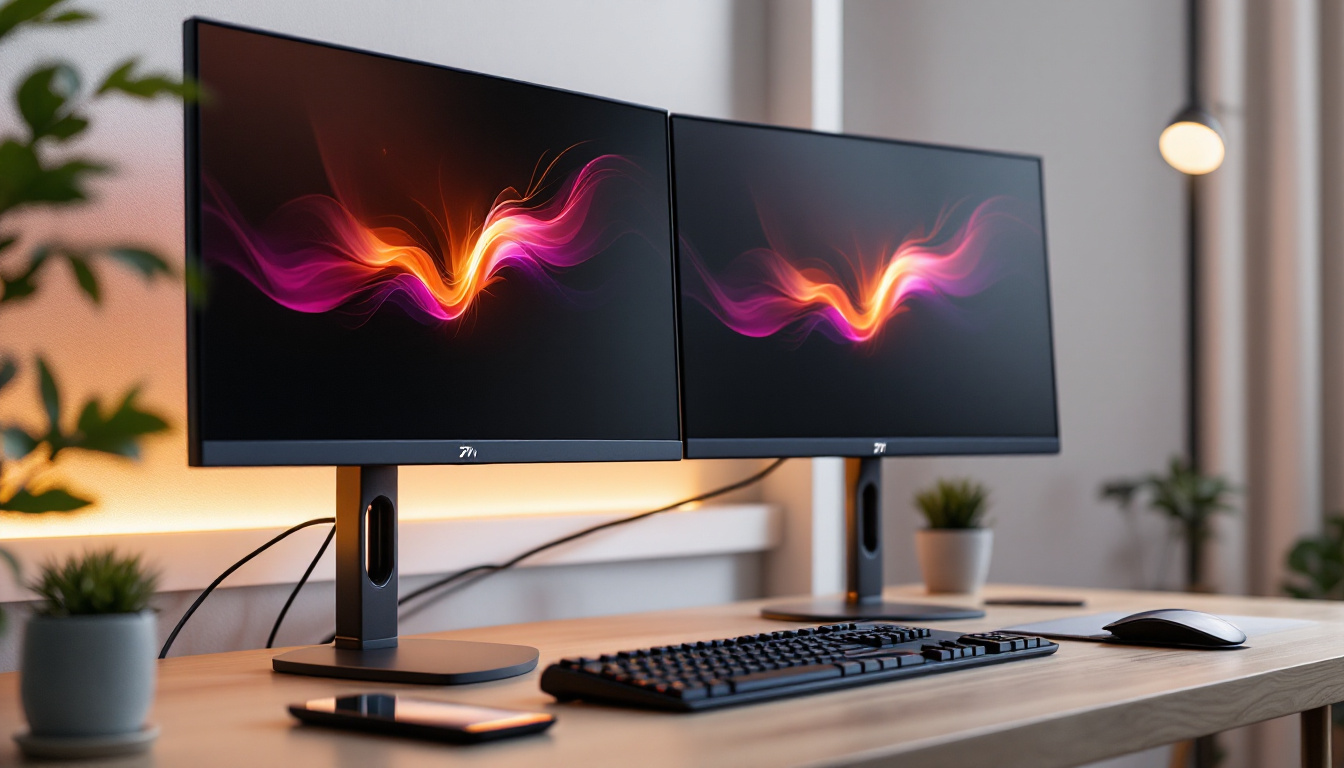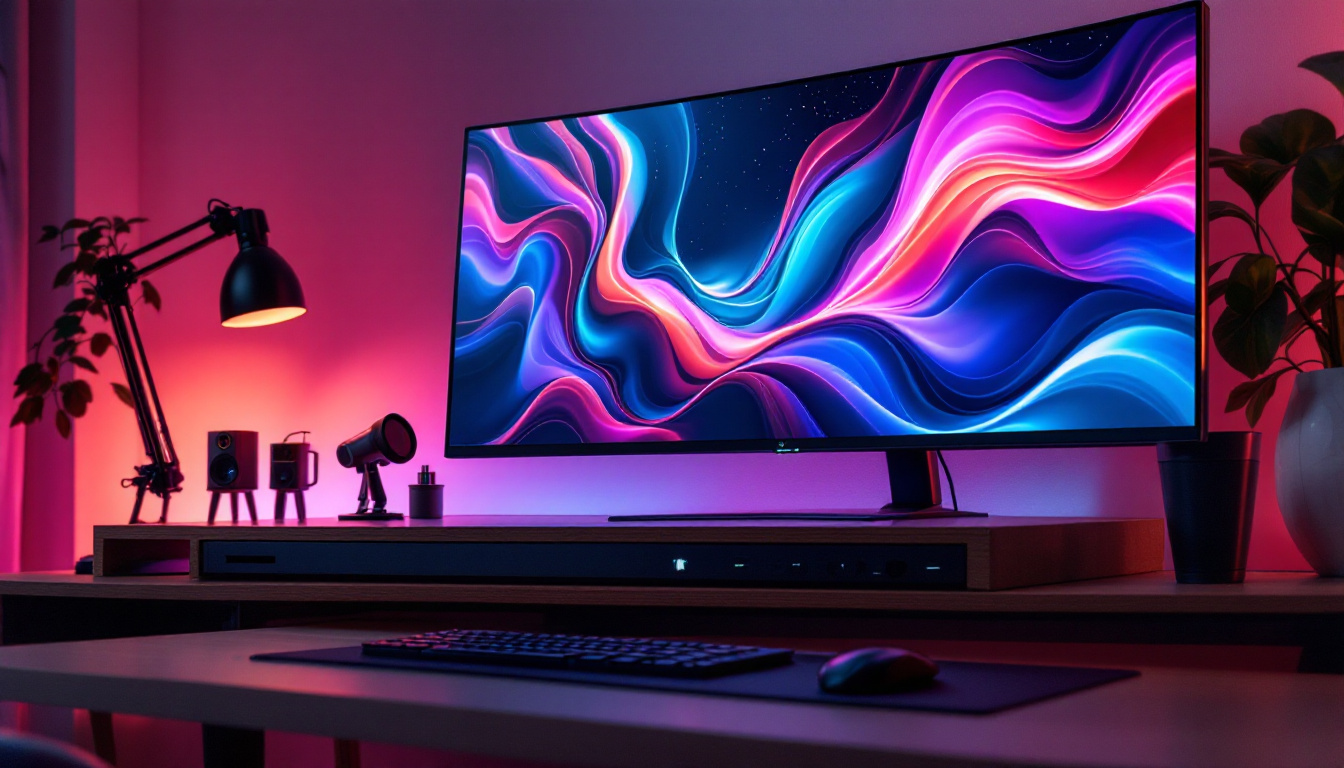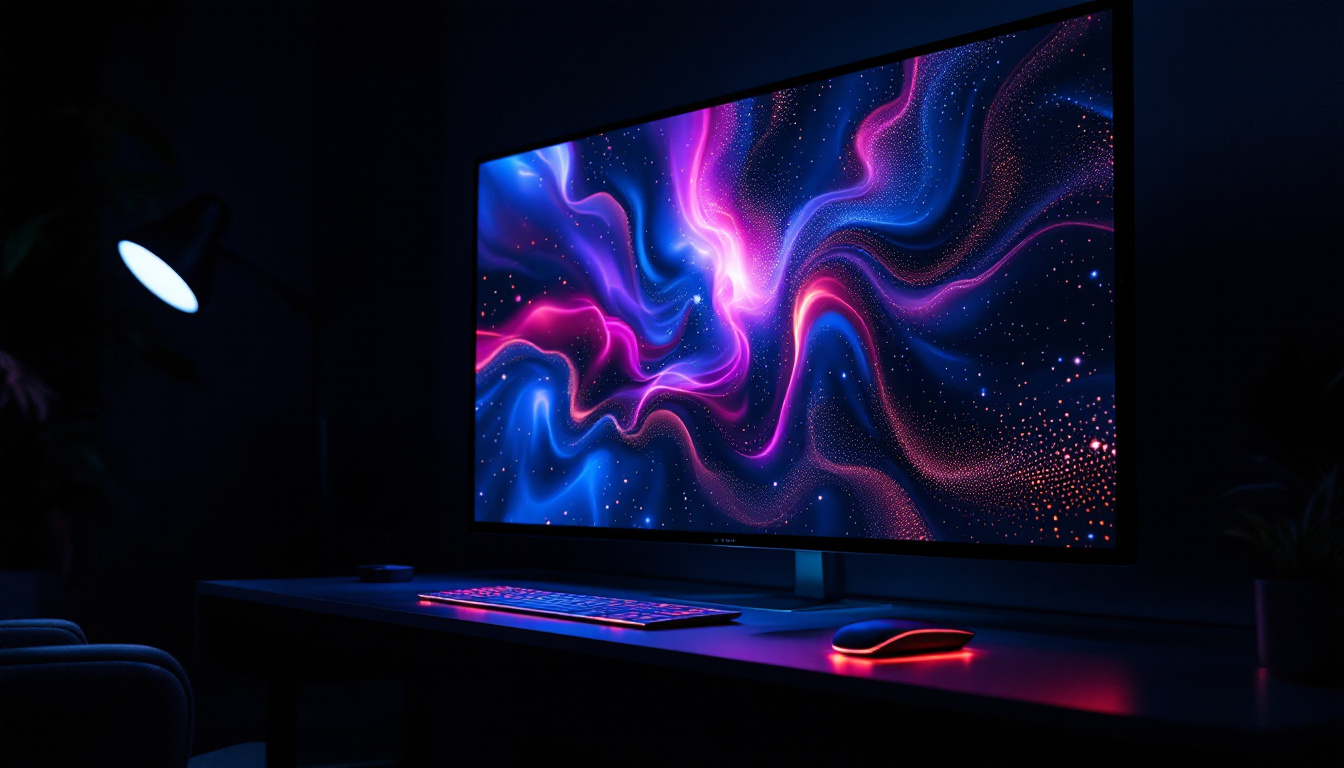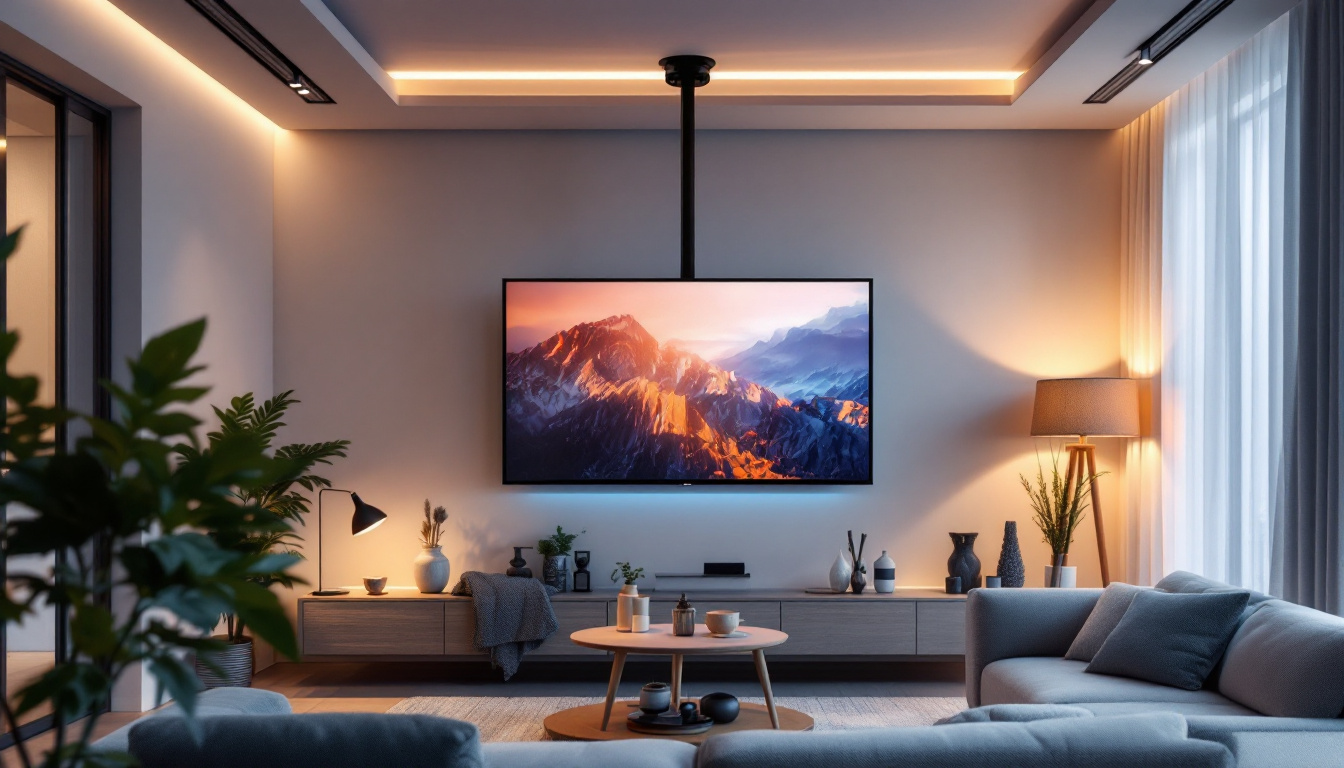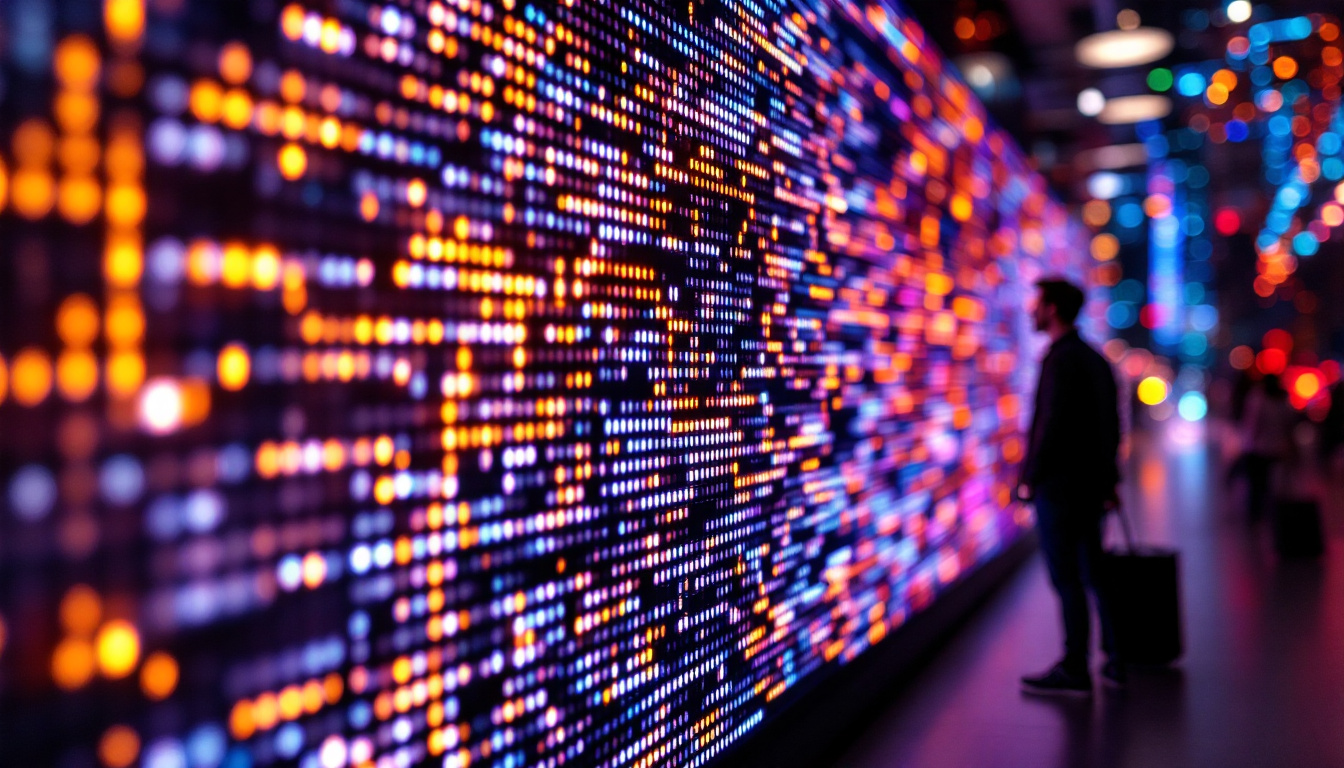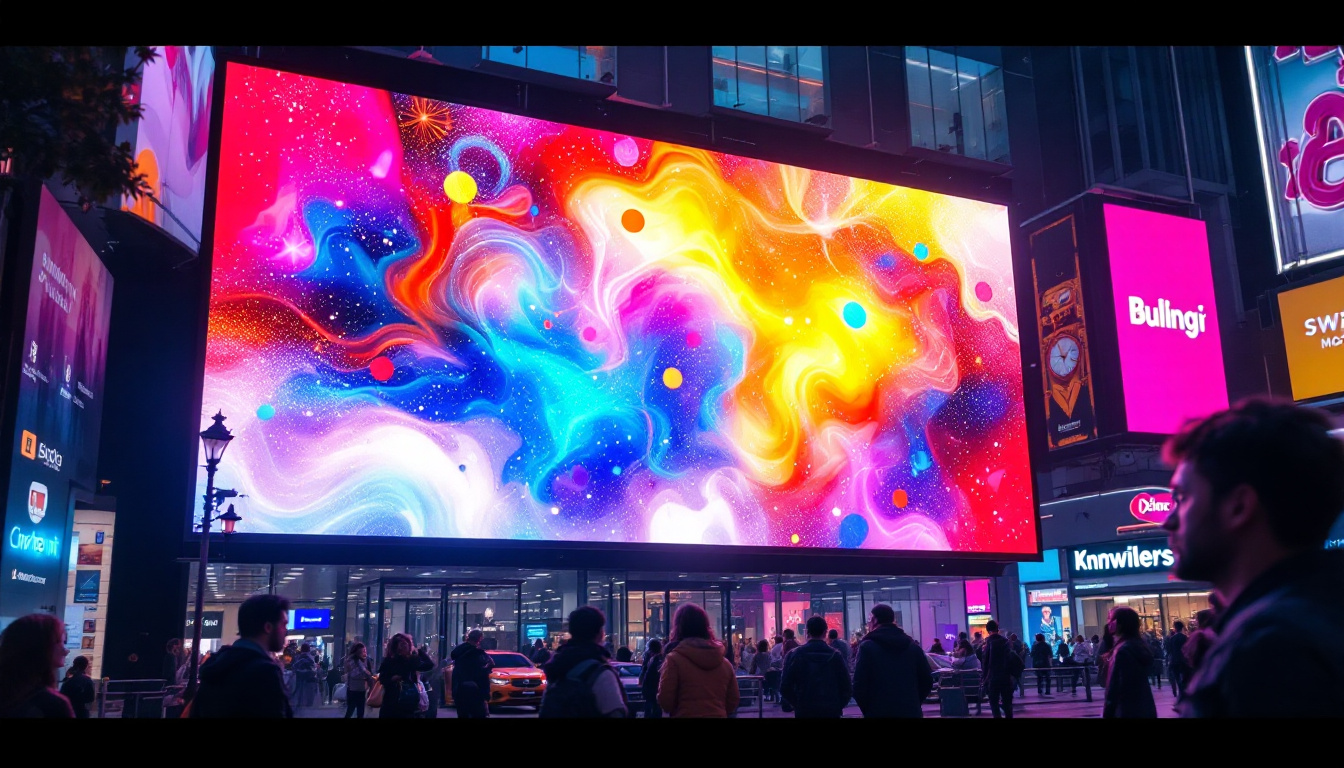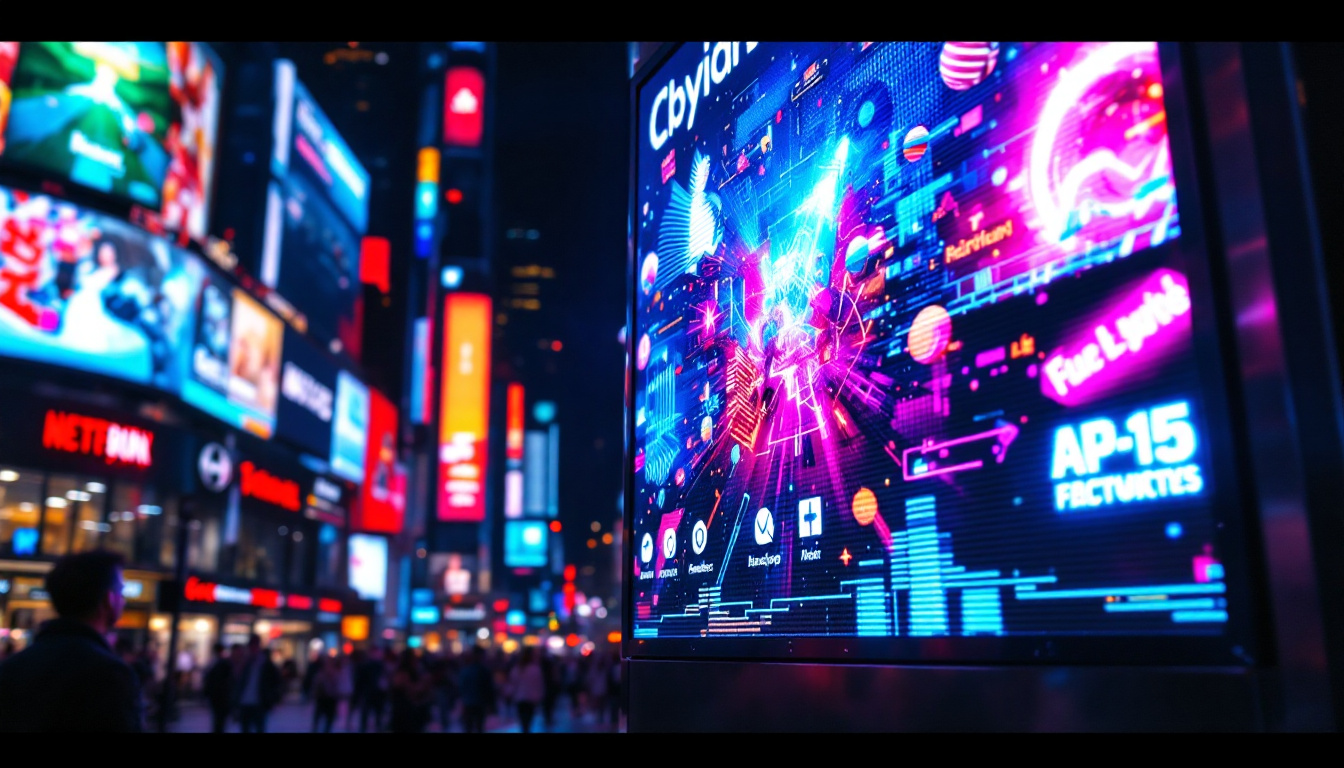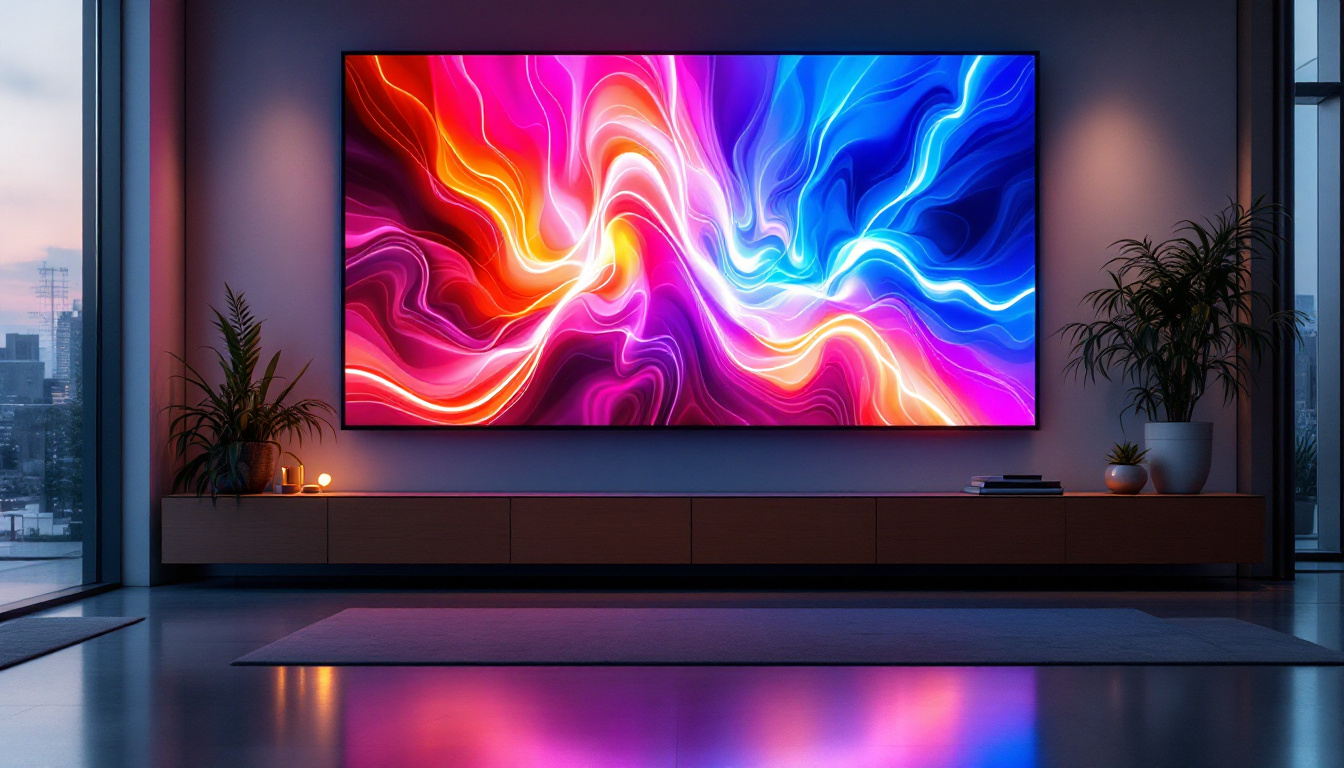In the world of modern art presentation, LED displays have emerged as a transformative medium. They not only enhance the visual experience but also offer artists and curators innovative ways to showcase their work. This article delves into the intricacies of LED displays as artwork displays, exploring their technology, advantages, and applications in various settings.
Understanding LED Technology
LED, or Light Emitting Diode, technology has revolutionized the way images and videos are displayed. Unlike traditional display methods, LEDs produce light through electroluminescence, which allows for vibrant colors and high contrast ratios. This section will explore how LED technology works and its implications for artwork displays.
How LEDs Function
At its core, an LED is a semiconductor device that emits light when an electric current passes through it. The color of the light emitted depends on the materials used in the semiconductor. When multiple LEDs are combined, they can create a full spectrum of colors, making them ideal for displaying intricate artworks.
LED displays are typically composed of thousands of tiny pixels, each containing red, green, and blue (RGB) LEDs. By varying the intensity of these colors, a wide range of hues can be achieved. This pixelated structure allows for high-resolution images, making them suitable for both detailed artwork and dynamic video displays.
Types of LED Displays
There are several types of LED displays, each serving different purposes. The most common types include:
- Direct View LED Displays: These displays are made up of individual LED modules that are directly visible to the viewer. They are often used for large installations, such as billboards and outdoor advertising.
- LED Video Walls: Composed of multiple LED panels, video walls can create large, seamless displays. They are commonly used in galleries and museums to showcase digital art.
- OLED Displays: Organic LEDs (OLEDs) offer superior color accuracy and contrast. They are often used in high-end applications, including art galleries, where fidelity to the original artwork is crucial.
Advantages of LED Displays for Artwork
LED displays offer numerous advantages that make them an appealing choice for showcasing artwork. From enhanced visibility to energy efficiency, these benefits cater to both artists and audiences alike.
Vibrant Colors and High Contrast
One of the most significant advantages of LED displays is their ability to produce vibrant colors and high contrast ratios. The RGB pixel structure allows for a broader color gamut, ensuring that artworks are displayed as intended. This is particularly important for artists who rely on color to convey emotion and meaning in their work.
Furthermore, the high contrast levels of LED displays enhance the visibility of details within the artwork. Shadows and highlights are rendered more accurately, allowing viewers to appreciate the intricacies of the piece. This level of detail can be especially beneficial in gallery settings where the aim is to engage the audience deeply.
Energy Efficiency and Longevity
LED technology is known for its energy efficiency. Compared to traditional display methods, such as incandescent or fluorescent lights, LEDs consume significantly less power. This not only reduces operational costs but also aligns with the growing emphasis on sustainability in the art world.
Additionally, LED displays have a long lifespan, often exceeding 50,000 hours of use. This durability means that galleries and artists can invest in LED technology without the constant worry of maintenance and replacement, making it a cost-effective solution in the long run.
Dynamic Content Capabilities
Another compelling feature of LED displays is their ability to showcase dynamic content. Artists can create interactive installations that change in real-time, allowing for a more engaging experience. This capability is particularly appealing in contemporary art, where the boundaries between traditional and digital mediums are increasingly blurred.
Moreover, LED displays can be programmed to display a variety of artworks or even rotate through a collection, offering viewers a diverse experience in a single visit. This flexibility can attract repeat visitors to galleries and exhibitions, as there is always something new to see.
Applications of LED Displays in the Art World
LED displays have found their way into various applications within the art world, from galleries and museums to public installations. Each setting utilizes the technology in unique ways to enhance the viewer’s experience.
Gallery and Museum Exhibitions
In galleries and museums, LED displays are increasingly used to showcase digital art and multimedia installations. These environments benefit from the high resolution and vibrant colors of LED technology, allowing for a more immersive experience. Curators can use LED walls to present video art, animations, and interactive installations that captivate audiences.
Additionally, LED displays can serve as informative tools, providing context and background information about the artwork. This integration of technology enhances the educational aspect of exhibitions, allowing visitors to engage with the art on a deeper level.
Public Art Installations
Public art installations have also embraced LED technology. Artists are using large-scale LED displays to create eye-catching installations in urban environments. These displays can transform public spaces, making art accessible to a broader audience.
For instance, LED displays can be used in festivals, parades, and other community events to showcase local artists. By incorporating dynamic content, these installations can change throughout the event, keeping the audience engaged and intrigued.
Art Fairs and Trade Shows
Art fairs and trade shows are another area where LED displays shine. Galleries and artists can use LED technology to create stunning presentations that attract potential buyers and collectors. The ability to display high-quality images and videos of artwork can significantly enhance the appeal of a booth.
Moreover, LED displays can be used to create a cohesive brand identity for galleries and artists. By incorporating their branding into the display, they can create a memorable experience for attendees, making it more likely that their work will stand out in a crowded marketplace.
Challenges and Considerations
While LED displays offer numerous benefits, there are also challenges and considerations to keep in mind when incorporating this technology into artwork displays. Understanding these factors can help artists and curators make informed decisions.
Cost and Investment
One of the primary challenges of LED displays is the initial investment. High-quality LED technology can be expensive, and for smaller galleries or artists, this may pose a significant barrier. However, it is essential to consider the long-term benefits, such as energy savings and reduced maintenance costs, which can offset the initial expenditure over time.
Additionally, the rapid evolution of technology means that newer, more advanced displays are continually being released. This can lead to concerns about obsolescence, as older models may not have the same capabilities as newer ones. Artists and galleries should weigh the benefits of investing in the latest technology against their budget and needs.
Technical Expertise
Implementing LED displays often requires a certain level of technical expertise. Setting up and maintaining these systems can be complex, and not all galleries may have the necessary resources. This can lead to challenges in ensuring that the displays function correctly and that the content is presented as intended.
To address this, galleries and artists may need to collaborate with technology specialists or invest in training for their staff. This additional layer of investment can further complicate the decision-making process regarding the adoption of LED technology.
Content Creation and Management
Creating content for LED displays is another consideration. Artists must ensure that their digital works are optimized for the specific resolution and format of the display. This may require additional skills in graphic design or video editing, which not all artists possess.
Furthermore, managing and updating content can be time-consuming. Galleries need a strategy for curating and rotating content to keep the displays fresh and engaging. This ongoing commitment can be a challenge for smaller institutions with limited staff and resources.
The Future of LED Displays in Art
The future of LED displays in the art world looks promising, with ongoing advancements in technology and an increasing acceptance of digital art. As artists continue to explore new mediums, LED displays will play a pivotal role in shaping the future of art presentation.
Innovations on the Horizon
Emerging technologies, such as flexible LED displays and augmented reality (AR), are set to redefine the possibilities of art presentation. Flexible displays can be shaped to fit unconventional spaces, allowing for more creative installations. Meanwhile, AR can enhance the viewer’s experience by overlaying digital elements onto physical artworks, creating a hybrid experience that blurs the lines between reality and digital art.
These innovations will likely lead to new forms of artistic expression, as artists experiment with the capabilities of LED technology. The integration of interactive elements and audience participation will further engage viewers, creating a more immersive art experience.
Increased Accessibility
As LED technology becomes more affordable and accessible, it is expected that more artists and galleries will adopt it. This democratization of technology will allow a broader range of artists to showcase their work in innovative ways, fostering a more diverse art community.
Furthermore, the rise of online platforms and virtual exhibitions has already begun to change how art is consumed. LED displays can play a significant role in these digital spaces, offering high-quality presentations that can reach global audiences.
Conclusion
LED displays have transformed the landscape of artwork presentation, offering vibrant colors, dynamic content capabilities, and energy efficiency. As galleries, museums, and public installations increasingly adopt this technology, the possibilities for artistic expression continue to expand.
While challenges such as cost and technical expertise exist, the benefits of LED displays far outweigh the drawbacks. As the art world embraces digital mediums, LED technology will undoubtedly play a crucial role in shaping the future of art presentation.
In a rapidly evolving landscape, artists and curators must remain adaptable and open to new possibilities. By harnessing the power of LED displays, they can create engaging, immersive experiences that resonate with audiences and redefine the way art is experienced and appreciated.
Explore the Future of Art Presentation with LumenMatrix
Ready to elevate your artwork displays with the vibrant colors, dynamic capabilities, and energy efficiency of LED technology? LumenMatrix is at the forefront of LED display innovation, offering a wide range of solutions tailored to create immersive visual experiences. From Indoor and Outdoor LED Wall Displays to Custom and Transparent LED options, our mission is to revolutionize visual communication. Engage your audience and share your message with unparalleled clarity. Check out LumenMatrix LED Display Solutions today and be part of the future of art presentation.

